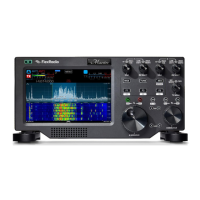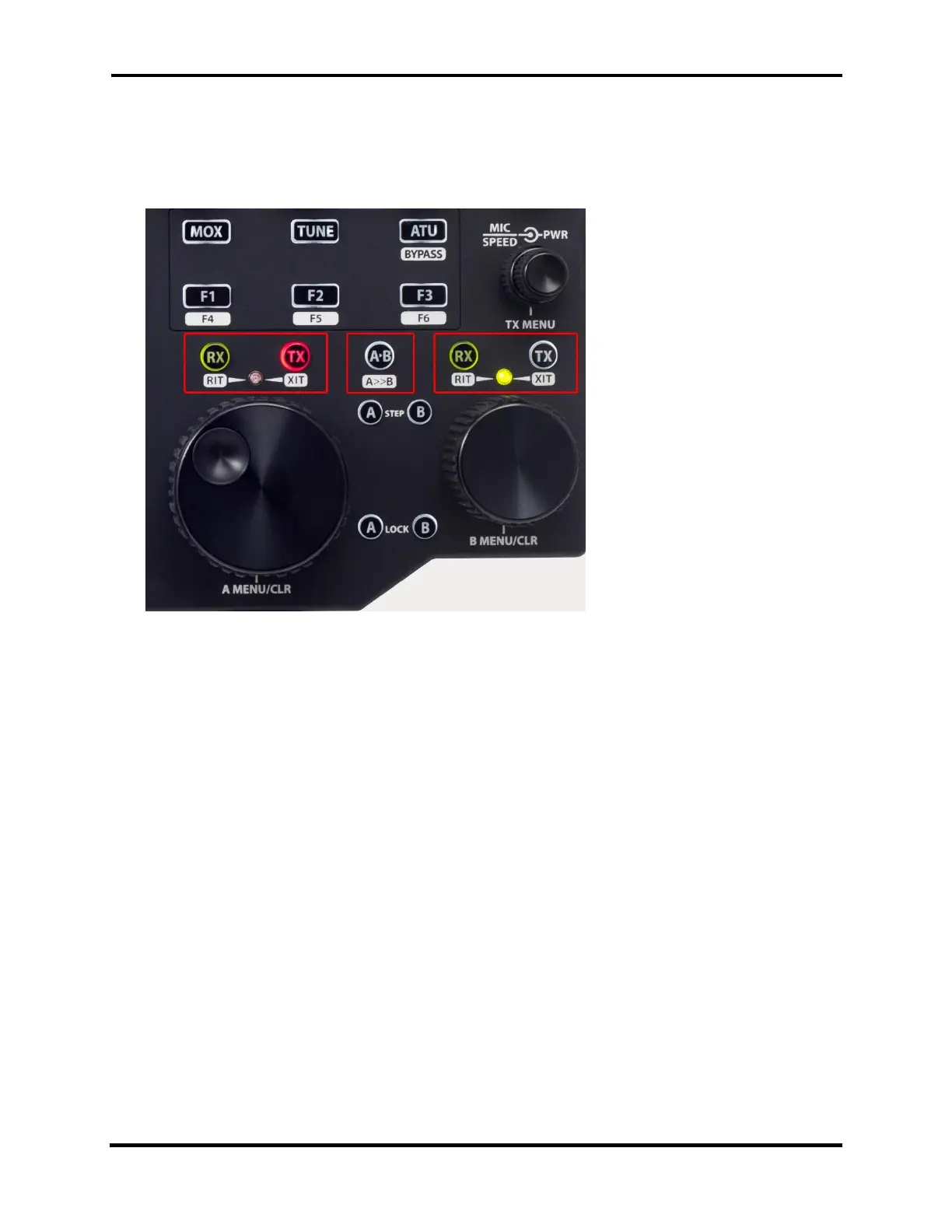FLEX-6000 Signature Series – Maestro User Guide
Copyright 2024 FlexRadio, Inc. All Rights Reserved. | Page 178
36 FRONT PANEL KNOBS AND BUTTONS
36.1 SLICE RECEIVER ACTIVATION BUTTONS
The Maestro front panel provides two sets of buttons that activate and deactivate the Slice
Receivers.
Pressing an RX button when the corresponding Slice is inactive causes the Slice Receiver to become
active. The button will illuminate green. Pressing the button again causes the Slice Receiver to
become inactive. With appropriate button presses, zero, one, or two Slice Receivers can be active.
Pressing a TX button causes the transmitter control to move to the corresponding Slice Receiver if
the receiver is active. If the Slice Receiver is inactive, the transmitter cannot be assigned to it. At
most one of the Slice Receivers can control the transmitter.
If two Panadapters are active in the Maestro display, pressing an RX button creates a Slice Receiver
in the upper Panadapter. Pressing the button again removes the Slice Receiver from the upper
Panadapter and creates it in the lower Panadapter. Another press removes the Slice Receiver
altogether. Either the A or B Slice Receiver can be moved to either Panadapter this way.
Note that when no Slice Receiver is active, pressing the B RX button will not create the B Slice
Receiver. When no Slice Receiver is active, the A Slice Receiver must be created first.
As a special case, if the A Slice is active and the B Slice is inactive, pressing the B TX button creates a
conventional “split operation” configuration. The B Slice is created at a higher frequency,
appropriate to the mode, and in the same mode as the A Slice. The transmitter control is moved to
the B Slice.
A long press of either RX button, when the Slice is active, and the button is green, activates the RIT
(Receiver Incremental Tuning) feature. RIT allows the Slice Receiver’s reception frequency to be
adjusted up and down with the tuning knob while holding the transmit frequency constant. In this

